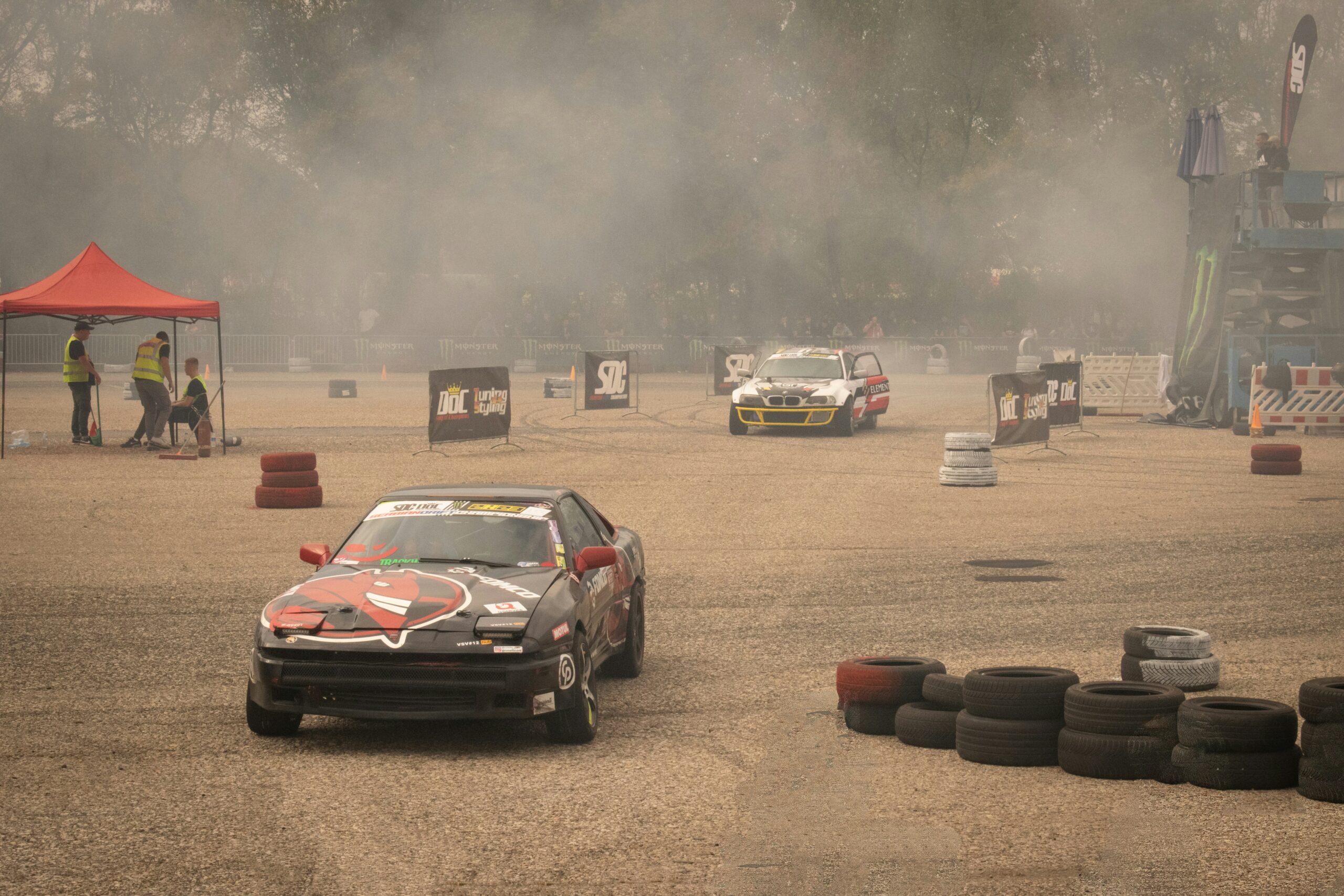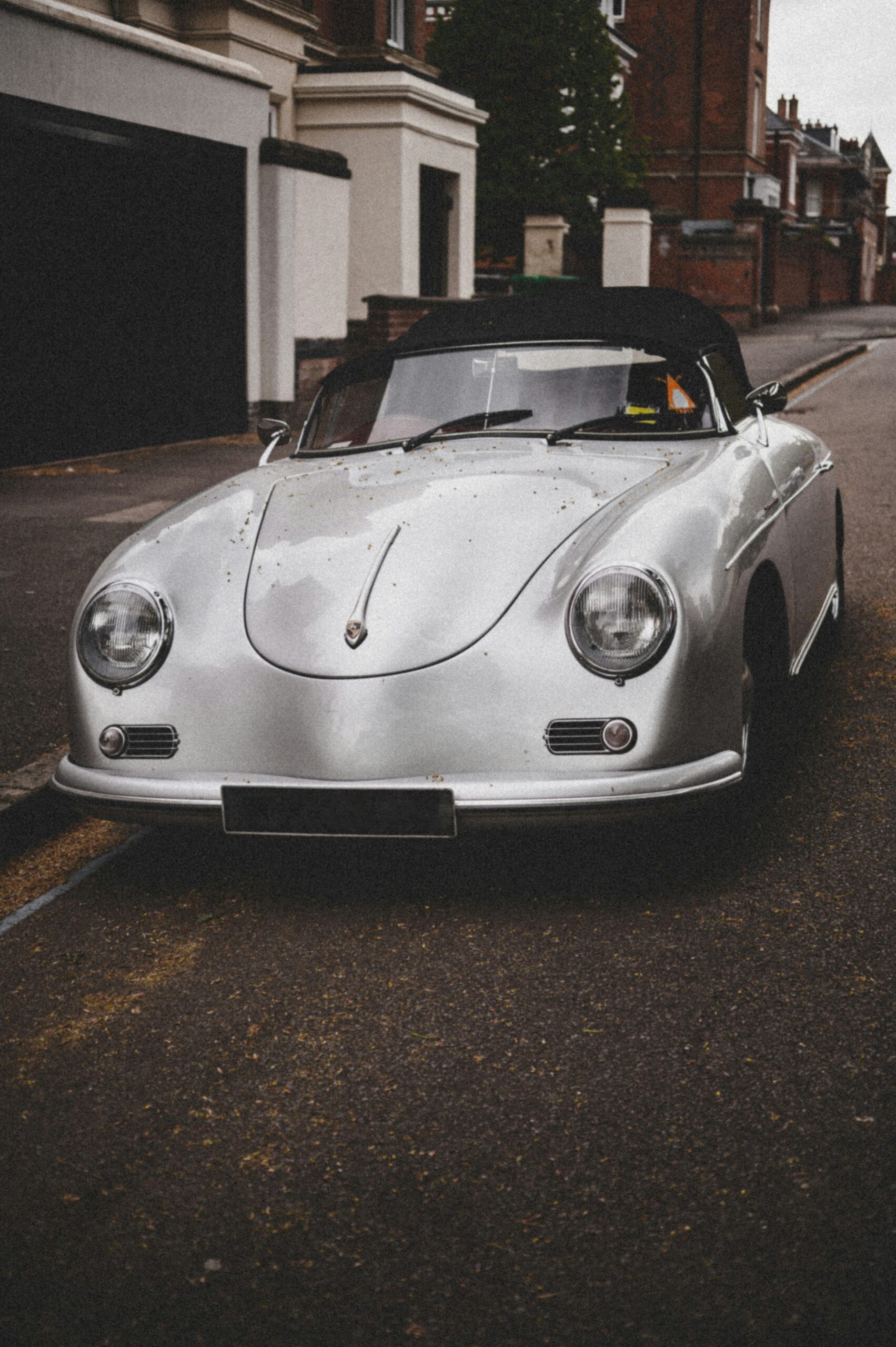Introduction to the Spanish Grand Prix
The Spanish Grand Prix holds a distinguished place in the Formula 1 calendar, renowned for its rich history and pivotal role in shaping the championship standings. Hosted at the Circuit de Barcelona-Catalunya, this race has been a staple of the F1 season since 1991. The circuit, located in Montmeló near Barcelona, is known for its technical layout that challenges drivers with a mix of high-speed straights and demanding corners.
The Spanish Grand Prix has seen numerous memorable moments, from Michael Schumacher’s dominance in the early 2000s to Fernando Alonso’s emotional victory on home soil in 2013. This race often serves as a crucial benchmark for teams to evaluate their car’s performance due to the circuit’s diverse characteristics. The track’s intricate design, featuring corners like the high-speed Turn 3 and the tricky chicane before the final straight, demands precision and skill from the drivers.
Qualifying at the Spanish Grand Prix is particularly significant. Given the circuit’s layout, overtaking opportunities are limited, making grid position a critical factor. A strong qualifying performance can set the tone for race day, providing a strategic advantage that can be the difference between a podium finish and a mid-field battle. Historically, pole position at this venue has often translated into race victory, emphasizing the importance of a flawless qualifying session.
As we delve into the intricacies of the Spanish Grand Prix, understanding the weight of qualifying becomes essential. The Circuit de Barcelona-Catalunya tests every aspect of a driver’s skill and the team’s technical prowess, making it a true litmus test for the season ahead. Join us as we follow all the action from qualifying, where every millisecond counts, and the stage is set for an exhilarating race weekend.
Pre-Qualifying Atmosphere
The atmosphere leading up to the qualifying session for the Spanish Grand Prix was electric, as anticipation built among the fans and teams alike. The weather conditions were nearly ideal for racing, with clear skies and mild temperatures setting the stage for a thrilling day at the Circuit de Barcelona-Catalunya. A gentle breeze swept through the paddock, adding to the pleasant ambiance and maintaining optimal track conditions for the drivers.
Fans turned out in droves, filling the grandstands and creating a vibrant sea of colors with their team merchandise and national flags. The palpable excitement was a testament to the rich motorsport culture in Spain and the deep-seated enthusiasm for Formula 1 racing. Spectators were treated to various pre-session activities, including driver parades and autograph sessions, which further heightened the sense of community and shared passion for the sport.
In the paddock, the buzz was equally intense as teams made their final preparations. Mechanics fine-tuned the cars, while engineers huddled over data, strategizing the best approach for qualifying. Notable occurrences included a surprise visit from former World Champion Fernando Alonso, who took the time to interact with fans and offer his insights into the day’s events. His presence added an extra layer of excitement, particularly for the local supporters.
Pre-session interviews provided a glimpse into the drivers’ mindsets. Reigning champion Lewis Hamilton expressed confidence in his team’s setup, while Max Verstappen emphasized the importance of securing a strong starting position for the race. Additionally, team principals shared their strategies and expectations, with Mercedes and Red Bull highlighting their ongoing rivalry, and Ferrari aiming to capitalize on recent improvements.
Overall, the pre-qualifying atmosphere was a blend of excitement, anticipation, and meticulous preparation, setting the tone for what promised to be an exhilarating qualifying session at the Spanish Grand Prix.
First Qualifying Session (Q1) Highlights
The opening qualifying session for the Spanish Grand Prix delivered an array of captivating moments, setting the stage for a thrilling competition. Teams and drivers came under intense scrutiny as they vied for positions to advance to the next round.
Among the standout performers in Q1 were Mercedes and Red Bull, who exhibited formidable pace. Lewis Hamilton and Max Verstappen led the charge, consistently posting top times. Ferrari also showed promising form, with Charles Leclerc and Carlos Sainz comfortably making it through to Q2.
On the flip side, there were notable surprises and disappointments. Aston Martin’s Sebastian Vettel struggled to find pace, finishing outside the top 15. Similarly, Williams’ George Russell faced challenges, unable to replicate his recent strong performances. Alpine, while expected to perform well, saw Fernando Alonso just scrape through to Q2, raising questions about their setup for the weekend.
Incidents on the track added to the drama of Q1. Nicholas Latifi’s crash brought out a red flag, causing a temporary halt in proceedings. His Williams car suffered significant damage, ruling him out of the session and affecting the rhythm of other drivers. Meanwhile, a mechanical issue plagued Haas’ Mick Schumacher, preventing him from setting a competitive time and ultimately ending his qualifying hopes prematurely.
As the clock wound down, the tension was palpable. Drivers battled fiercely for the remaining Q2 spots, with mere hundredths of a second determining their fate. At the end of a riveting session, the drivers who did not advance to Q2 included Sebastian Vettel, Nicholas Latifi, Mick Schumacher, Nikita Mazepin, and George Russell. Their elimination underscored the unforgiving nature of the qualifying format and the high stakes at play.
Second Qualifying Session (Q2) Highlights
The second qualifying session (Q2) at the Spanish Grand Prix was a thrilling showcase of skill and strategy as drivers vied for a coveted spot in the top 10. The session began with all teams eager to secure their places in the final qualifying round. The battle was intense, with frontrunners like Lewis Hamilton, Max Verstappen, and Charles Leclerc setting the early pace.
Hamilton, driving with remarkable precision, clocked an impressive lap time of 1:19.678, immediately putting him at the top of the leaderboard. Verstappen, not far behind, showcased Red Bull’s competitive edge with a time of 1:19.845, while Leclerc’s Ferrari followed closely, demonstrating significant improvements in their qualifying pace.
As the session progressed, strategy played a crucial role. Teams grappled with tire choices, debating between the soft and medium compounds to optimize performance. Mercedes opted for a split strategy, with one car on softs and the other on mediums, aiming to cover all potential scenarios. Red Bull and Ferrari, however, committed fully to the soft tires, seeking maximum grip for their flying laps.
Notable performances came from McLaren’s Lando Norris, who managed to secure a strong position with a time of 1:20.234, and Alpine’s Fernando Alonso, whose experience shone through as he posted a competitive 1:20.456. Conversely, the session was not without its challenges. Aston Martin’s Sebastian Vettel encountered a technical glitch, forcing him to abort his final lap, which significantly impacted his qualifying chances.
In the final moments of Q2, the pressure mounted as drivers pushed their cars to the limit. The top 10 drivers who successfully advanced to Q3 were Hamilton, Verstappen, Leclerc, Norris, Alonso, Carlos Sainz, Sergio Perez, Daniel Ricciardo, Valtteri Bottas, and Pierre Gasly. Unfortunately, Vettel, along with Esteban Ocon, Yuki Tsunoda, George Russell, and Antonio Giovinazzi, were eliminated, unable to break into the top tier.
Third Qualifying Session (Q3) Highlights
The culmination of the Spanish Grand Prix qualifying rounds, the third qualifying session (Q3), provided an electrifying spectacle as the top ten drivers vied for pole position. The atmosphere was charged with anticipation as teams deployed their most strategic approaches to secure advantageous grid placements for the race.
As the session commenced, it was immediately apparent that the leading teams were not holding back. Mercedes and Red Bull Racing were quick off the mark, setting blistering fast laps. Lewis Hamilton showcased his trademark precision, clocking in a time that momentarily seemed unbeatable. However, Max Verstappen of Red Bull, with an aggressive yet controlled drive, managed to edge out Hamilton by a slim margin, setting the fastest lap of the session at that point.
Ferrari’s Charles Leclerc also put in a commendable performance, displaying remarkable speed and control. His lap times consistently placed him as a strong contender for the front row. Meanwhile, McLaren’s Lando Norris and Alpine’s Fernando Alonso, both boasting impressive pace, added to the excitement by challenging the usual frontrunners, making the battle for the top spots fiercely competitive.
In a dramatic twist towards the end of Q3, the final minutes saw a flurry of activity as drivers made their last attempts to improve their positions. The strategy of timing and tire choice played a pivotal role during these critical moments. Mercedes opted for a fresh set of soft tires for Hamilton, hoping to reclaim the top spot. Similarly, Red Bull’s Verstappen and Perez pushed their cars to the limit, aiming for a decisive final lap.
The conclusion of Q3 saw Max Verstappen securing pole position with a stunning lap time, narrowly beating Lewis Hamilton. Charles Leclerc rounded out the top three, with a noteworthy performance that solidified his status as a key competitor. Underdogs like Norris and Alonso managed to secure respectable positions, adding a layer of unpredictability to the upcoming race.
In summary, the Q3 session was a testament to the skill and strategy of the drivers and their teams. The final qualifying order set the stage for an exhilarating Spanish Grand Prix, with Verstappen on pole, followed closely by Hamilton and Leclerc. Fans can expect a thrilling race filled with high-stakes competition and potential surprises.
Post-Qualifying Reactions
The Spanish Grand Prix qualifying session elicited a range of emotions from drivers, team principals, and analysts alike, creating an electrifying atmosphere in the paddock. Max Verstappen’s pole position victory was met with jubilation from the Red Bull camp. In a post-qualifying interview, Verstappen expressed his satisfaction, stating, “The car felt amazing today. We’ve worked hard to get this setup, and it’s great to see it pay off.”
Mercedes’ Lewis Hamilton, who secured the second spot, shared his thoughts, noting the competitive nature of the session. “It was a tough battle out there. We’ve made some significant improvements, but Red Bull is still incredibly strong,” he remarked. Hamilton’s comments underscore the ongoing rivalry between Mercedes and Red Bull, a storyline that continues to captivate fans and analysts alike.
Ferrari’s Charles Leclerc, who faced difficulties during the session, took to social media to express his frustration. “Tough day at the office. We have some work to do before tomorrow,” he tweeted, hinting at potential challenges for the Scuderia in the upcoming race. Meanwhile, Carlos Sainz, Leclerc’s teammate, remained optimistic, saying, “We have a solid strategy for the race. I’m confident we can make up ground.”
Team principals also weighed in on the day’s events. Christian Horner, Red Bull’s team principal, praised Verstappen’s performance, highlighting the importance of their strategy. “Max delivered when it mattered most. Our team’s effort is truly remarkable,” Horner commented. Toto Wolff of Mercedes emphasized the need for ongoing development, stating, “We are in a continuous battle for perfection. There’s always room for improvement.”
Analysts were quick to dissect the qualifying session, with many pointing out emerging storylines. The consistent performance of the mid-field teams like McLaren and Alpine drew considerable attention. “The midfield battle is heating up, and it’s exciting to see such fierce competition,” noted Sky Sports analyst Martin Brundle.
Overall, the mood in the paddock was a mix of excitement and tension, with several teams looking ahead to Sunday’s race with cautious optimism. As the qualifying dust settles, the anticipation for the main event builds, promising an action-packed Spanish Grand Prix.
Technical Analysis
The qualifying session for the Spanish Grand Prix presented a fascinating array of technical adaptations from the teams, showcasing their strategic prowess and engineering acumen. One of the focal points of the session was the varied car setups employed by the teams. The balance between downforce and straight-line speed proved crucial, with several teams opting for higher downforce configurations to navigate the circuit’s twisting sections, while others sought to maximize speed on the straights.
Tire choices also played a pivotal role in the session. The soft compound tires, offering superior grip but faster degradation, were the preferred choice for many during the final Q3 runs. However, some teams experimented with medium compounds to assess their performance for potential race strategies. The differential in tire performance underlined the importance of tire management, which will undoubtedly be a critical factor during the race.
Aerodynamic adjustments were another key element, with teams employing various wing configurations and aerodynamic tweaks to optimize performance. These adjustments were particularly evident in the mid-field teams, which made significant gains through meticulous aerodynamic fine-tuning. Insights from engineers indicate that the aerodynamic balance achieved during qualifying could either make or break a team’s race day performance, especially in the context of maintaining tire health and fuel efficiency.
Engineers and technical directors provided valuable insights post-qualifying. It was noted that the teams who managed to strike a perfect balance between aerodynamic efficiency and tire management emerged as the front-runners. Conversely, teams that struggled with these aspects found themselves lagging behind, highlighting the intricate link between technical setup and overall performance.
Looking ahead to the race, these technical factors are poised to play a significant role. Teams will need to adapt their strategies based on the data gathered during qualifying, focusing on optimizing their car setups and tire strategies to navigate the demanding Spanish circuit effectively. The lessons learned from the qualifying session will be instrumental in shaping the outcome of the Grand Prix.
Looking Ahead to Race Day
The anticipation for the Spanish Grand Prix main race has heightened following an exhilarating qualifying session. As the drivers and teams prepare for Sunday’s showdown, the spotlight remains firmly on the frontrunners who have showcased impressive performances. The pole-sitter, with their advantage, will be keen to convert their qualifying success into a race victory. However, the ever-present threat from other top qualifiers cannot be underestimated. As history suggests, race strategies will play a pivotal role in determining the final outcome.
For the frontrunners, tire management will be crucial. With the Circuit de Barcelona-Catalunya known for its abrasive surface, preserving tire life while maintaining competitive lap times is imperative. The most likely approach would be a two-stop strategy, although a flexible one-stop strategy might be considered if the conditions favor it. Teams must remain vigilant, ready to adapt to the unfolding dynamics of the race.
Midfield teams, often the source of on-track drama, will be looking to capitalize on any mistakes made by the front runners. Their strategies might lean towards an aggressive approach, aiming for early overtakes and undercuts during pit stops. The midfield battle is expected to be intense, with the potential for significant position changes, especially through the DRS zones.
Weather conditions are another variable that could drastically influence the race. Current forecasts suggest a possibility of rain, which would necessitate quick strategic pivots towards wet weather setups and potentially, intermediate or full wet tires. Track conditions in such scenarios are notoriously tricky, and driver skill in handling wet conditions could become a deciding factor.
As we look forward to the main race, several key factors warrant attention. The start will be critical, especially for those in the top positions, as a strong getaway can often set the tone for the remainder of the race. Additionally, the pit stop window and strategic calls during Safety Car periods could be pivotal. Keeping an eye on tire degradation rates and weather updates will be essential for teams aiming to optimize their race strategy.
In conclusion, the Spanish Grand Prix promises an engaging and unpredictable race day. With variables like tire management, weather changes, and strategic ingenuity at play, fans are set for a thrilling spectacle. The battle for supremacy on the Circuit de Barcelona-Catalunya is poised to deliver another memorable chapter in the world of Formula 1.



